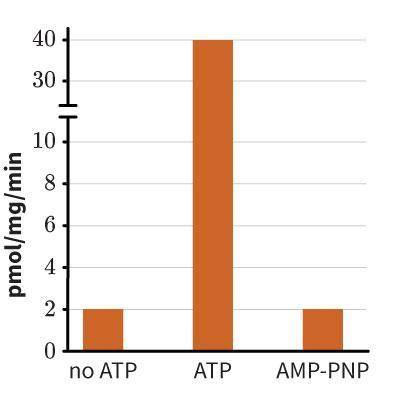
AMP-PNP is a non-hydrolyzable ATP analog that cannot be metabolized by cells. Taurocholate is a bile acid that helps emulsify fats. When taurocholate is added to hepatocyte cell culture, it accumulates in those cells. The graph below shows the rate of cellular accumulation of the drug taurocholate in the presence of either no ATP, ATP, or AMP-PNP. Based on this data, describe the mechanism by which taurocholate enters the cell. Justify your answer.


Answers: 3


Another question on Biology

Biology, 22.06.2019 06:30
Zoo geographic regions are characterized by the presence of specific groups of animals these regions are determined by the taxonomic or phylogenetic relationships of animals. the map shows the zoogeographic regions proposed by the naturalist alfred russel wallace in 1876. the similarities of organisms in which two areas numbered above provide the best evidence for common ancestry between the organisms in both locations ?
Answers: 3


Biology, 22.06.2019 14:30
Asegment id dna that is artificially created from two or more organism through use of dna enzymes in a laboratory is called a segment of dna that is artificially created from two or more organisms through use of dna enzymes in a laboratory is called
Answers: 2

Biology, 22.06.2019 18:30
There are few cells in the body that do not undergo mitosis: most somatic cells divide regularly, some more than others. take for example the cells that line the digestive tract. these cells must be frequently replaced because they are constantly eroded by the movement of food through the tract. what mechanism(s) is/are in place to ensure that these cells are exact copies of the mother cell
Answers: 1
You know the right answer?
AMP-PNP is a non-hydrolyzable ATP analog that cannot be metabolized by cells. Taurocholate is a bile...
Questions

Geography, 25.08.2020 21:01









History, 25.08.2020 21:01




Mathematics, 25.08.2020 21:01



Mathematics, 25.08.2020 21:01

Mathematics, 25.08.2020 21:01

Business, 25.08.2020 21:01



